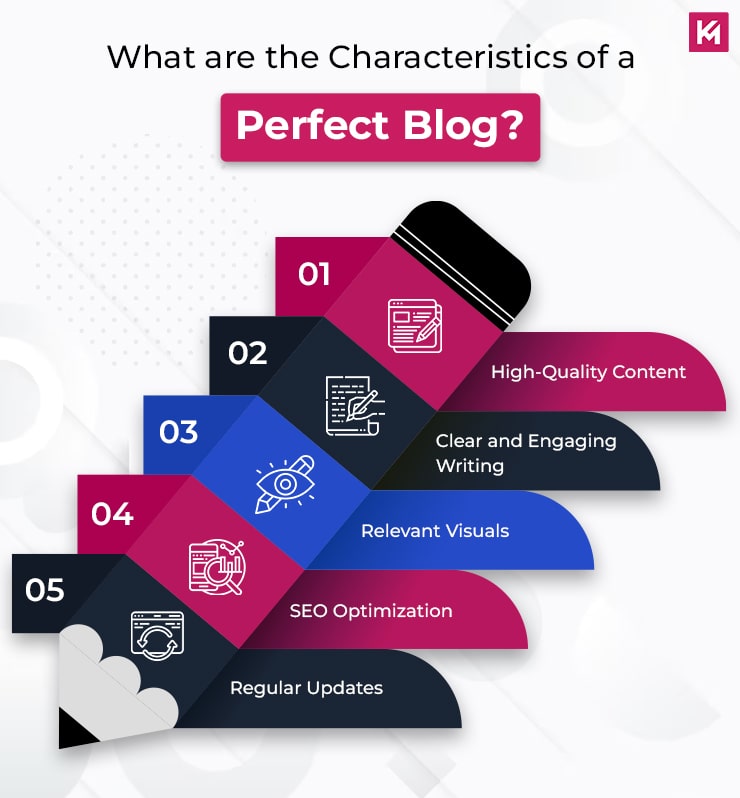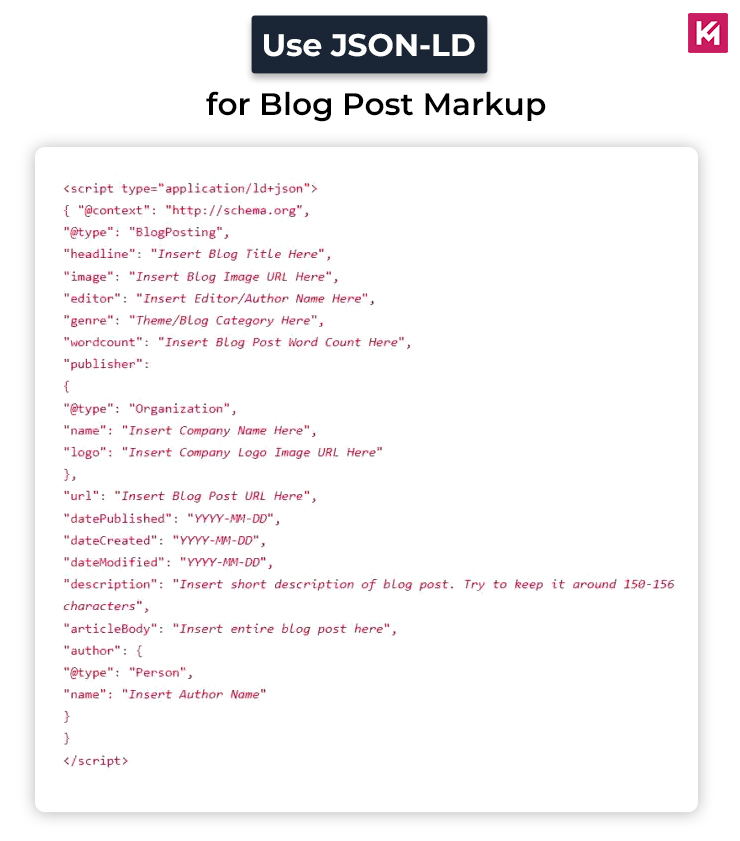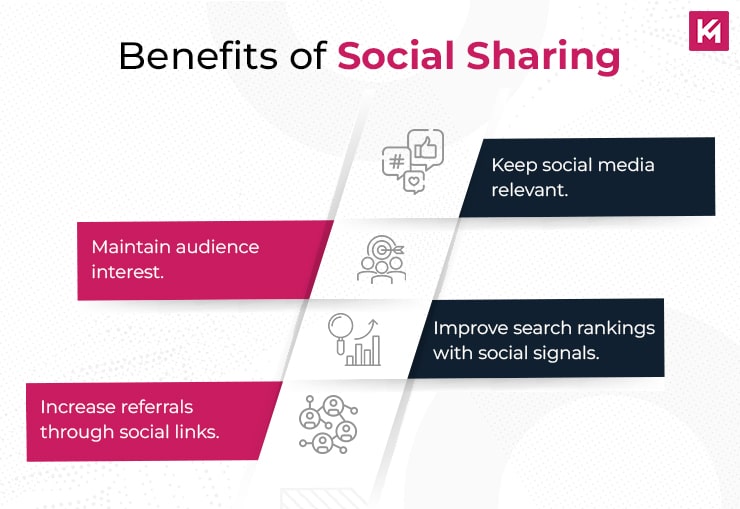Blogging is a medium through which you can impart your knowledge, expertise, and ideas to your target audience. It is one of the critical tools by which a business can educate and bring potential customers to their online store. This approach of digital writing and publishing has various benefits that individuals or groups can get to further their goals.
However, the big issue that many face is how to write a blog that ranks better on the SERP and motivates the target visitors to engage. This blog will help you write a blog that stands out among the competitors and satisfies the readers’ needs.
Let’s get to it,
10 Practices to Create Visible and Engaging Blogs
The secret to creating perfect blogs for your website lies in a simple and integrated approach. Below are some of the practices that you should consider to write a blog that satisfies the search purpose of your target users.
1.Explore blog topics:
Did you know that a topic that is in a trend is more likely to become visible on search engines? This gives you a cue that your target audiences are looking to read and gain information on specific topics in trend. Therefore, it makes sense to create a blog on the same set of topics. For this, you may take inspiration from the various sources discussed below:
1. The first step is to find out the blog topics that your competitors are writing on. This will help you figure out the topics that are in trend to better target and engage with the audience.
2. You can also use Google Trends to find trending topics on which you can write blogs.
3. Find out the latest happenings and news concerning your niche.
2.Do not forget to add keywords:
Keywords help search engines understand your content and match the same to the users’ search queries. They are words or phrases that are used by the search maker to land on desired results.
Keyword addition is the part of the SEO strategy that is crucial if you wish to make your content rank higher.
Now that you know what the keywords are, let us explore the ways to find them. Keyword research can be done with the help of paid tools such as Google Keyword Planner, Ahrefs, etc., or through a simple Google search.
The free method does give you reliable keyword suggestions, but it lacks the analysis power of the paid keyword research tool. A paid tool gives you many metrics, such as search volume, keyword difficulty and a few more for better keyword selection and addition.
- A simple search on Google to find out the right keywords!
- Visit the website which we all know as Google.com.
- Type a primary keyword that illustrates the offering of your brand.
- Note down the LSI keywords featured just below the search bar.
- Press enter to visit Google’s result page.
- Explore the sections such as “People Also Asked” and “Related Searches” Sections to expand your keywords collection.
The keywords collected through this method can then be added to the meta texts, headers, URLs, and body of the content.
3.Structure your content:
Content that is well-structured has the power to engage the audience till the end of the read. The main concept of this approach is to split the content into many different sections for better reading and understanding. You can use sub-headings and bullet points in your content for the same.
Moreover, make sure the paragraphs and the length of the sentences you write are shorter. The longer the length of the paragraph, the more will be the chances of losing focus.
Below is an example of an outlined blog:
Topic: How to optimize your website for On-page SEO?
- Perform keyword research.
- Create content that satisfies the user’s search intent.
- Add the collected keywords to the various on-page elements.
- Insert images and videos that complement and support your content.
- Interlink your web pages with each other.
4.Create an engaging content
In this section, we will talk about the basic points that you should keep in mind for writing engaging content. A blog typically consists of 3 components, which are as follows.
- The Introduction
- The Body Content
- The Conclusion
Let us discuss the components in a more complete way as possible.
1. Introduction:
It is the component of your blog to which the reader first interact with. So, it becomes crucial for the writer to create an introduction that hooks the users for line one. You may use quotes, statistics, statements or a question-answer approach for the same.
For example, in this blog, I have started the blog by stating a general statement followed by a short solution. This approach helps to engage the audience while encouraging them to explore more.
2. The main part- The Body:
This is the part where you aim to impart holistic information on the topic to your readers. In this section of the blog, make sure that you discuss the content in-depth, covering different aspects of the same.
Sort out this section with the help of subheadings and bullet points for a quick read of the visitors. Ensure your body content is accurate and is devoid of any repetition of the ideas.
You should aim to create content that is well-researched and provides an in-depth analysis of the topic. Moreover, while writing a blog, you also want to make sure the tone of your writing matches the vibe of your target audience.
For example, If you are writing a blog on a corporate topic, you should aim for a formal tone. And for a general audience, you may write with an informal tone.
3. Conclusion:
You should know that there are many bloggers who prefer not to write a conclusion in their blogs. But if you ask me, a conclusion is a critical part of the blog where you summarize and help the readers go through the blog one last time.
Always remember that the conclusion part of the blog does not consist of extra points and is shorter in length. Add CTA to the end of the blog to encourage the target readers to take the desired action, such as buying, subscribing or sharing the content.
5. Write a compelling headline
The headlines have the power to encourage your target visitors to click and visit your website. This is the element of your blog that tells the readers about the content covered in the rest of the blog. So, it becomes critical to craft an irresistible headline that compels the readers to take action.
How to write a compelling headline for your blog?
- The headline should not be more than 65 characters in length.
- Ensure the headline contains the target keywords for better search ranking performance.
- Add actionable words to the headlines that encourage the readers to take action.
- Write in a way that evokes curiosity and emotion in the minds of the readers.
For Example,
- HOW DOES SEO DRIVE TRAFFIC AND LEADS FOR LAW FIRMS?
- 30 SIMPLE-TO-USE AND FREE SEO TOOLS TO TRY
- HOW TO USE CHATGPT FOR SEO?
- HOW TO PLAN SEO STRATEGY FOR NEW PROJECT?
6. Incorporate relevant images:
You might not know this, but images can make a significant difference to your blog value. When you optimize your blog for images, you make your blog findable through Google Search and Google Images Search.
Create an image that helps the readers go through the specific content of your blog in a jiffy. Employ flow chart diagrams, infographics and other image types in your blog to increase the user experience of the readers.
Search engine optimization is a bundle of integrated approaches that empowers websites to rank better on search engine result pages. When a blog website ranks better on the search engines, it becomes more visible to the users, which encourages them to click and visit. A blog can be optimized for the following SEO practices.
- Keywords:
Add the gathered keywords in your blog’s headings, sub-headings, and body for better SEO performance. Modify your blog’s meta title and meta description with actionable and target keywords.
- Page loading speed:
Ensure that your web pages are quick to load to your website visitors’ requests. A slow-loading website loses the users’ interest and makes them visit another website. So, it becomes critical to optimize your web pages for a faster loading speed. Consider the following points for the same.
- Decrease the size of the images and video on your website for quick loading speeds.
- Eliminate unnecessary coding elements from HTML and Javascript files.
- Say yes to browser caching.
- Eliminate multiple redirects from your website.
- Internal linking:
It is the practice of linking your web pages with each other. This approach increases the user experience of the reader by allowing them to jump from one related blog to another of their interest.
Internal linking can also transfer the value of reputable web pages to the new one, thus giving out SEO benefits.
- External linking:
This is the practice of earning hyperlinks from a third-party website. The main reason for building a backlink profile is to inspire search engines that your website is credible and of value. This, in turn, increases the search ranking and the visibility of your website before your target audiences.
Guest posting is an example of obtaining backlinks from reputable websites.
- Mobile optimization:
Optimizing your blog website ensures that your blogs are accessible through a number of mobile devices. Use the concept of responsive design to help your blogging website adjust its graphical layout as per the size of the screen used.
- Secure website:
Don’t let your potential reader leave your website due to a lack of a proper security protocol. Optimize your blogging website for HTTPS protocol to instill a feeling of safe and secure browsing.
8. Proofread and edit:
The last step is proofreading and editing. This step is very crucial as you don’t want your article to get published with grammatical errors or typos. Use tools such as Grammarly to find out the typos or grammatical errors in your blog and rectify them for a better reading experience.
Note: Use Hemingway Editor, a free tool, to boost the readability score of your blog. The more readable your blog is, the more the reader engages.
9. Structured data:
Optimize your blogging website for structured data to help search engines understand the rich information of your content clearly. By doing so, you enable your website to be more likely to rank for zero search results for the related users’ queries. The image below illustrates the structured data within the HTML codes.
10. Social sharing:
Social sharing is a medium through which the readers who liked your content can share the content with their friends or peer groups. It encourages referral traffic and builds the authority of your website. Add social media buttons to your graphical layout for fast and smooth sharing. Below is an infographic that illustrates the benefits of the same.
Final Words!!
In the end, a blog can be used to share your knowledge or promote your offering among your target audiences. Understand that writing a blog is one thing, and making it rank higher on the SERP is another. You have to take into attention many factors that are discussed above to secure a chance.
So, if you are someone who one to get started with blogging or wants to make their blog popular among, an integrated approach discussed above is critical.




